

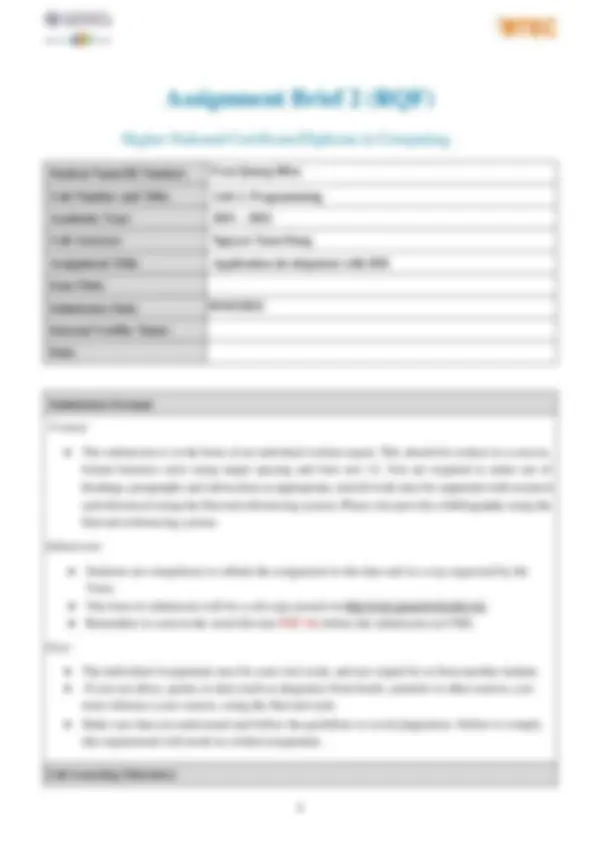

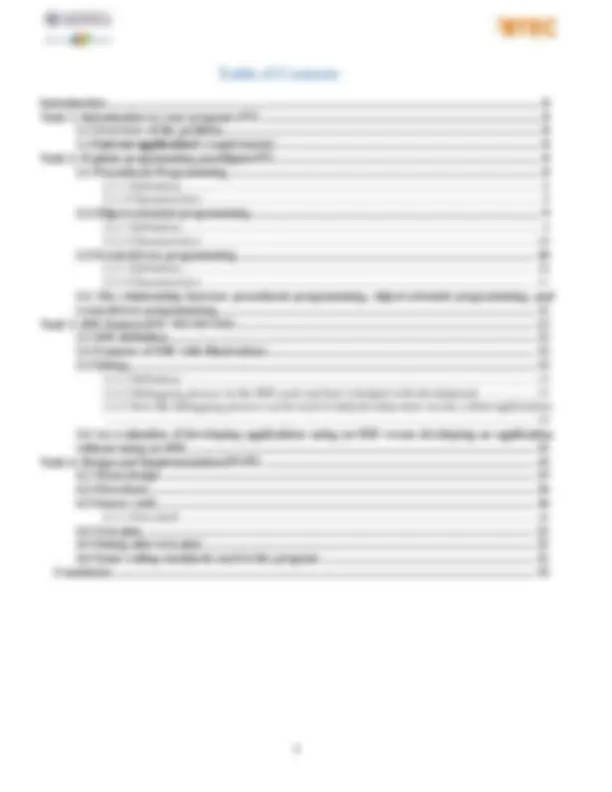

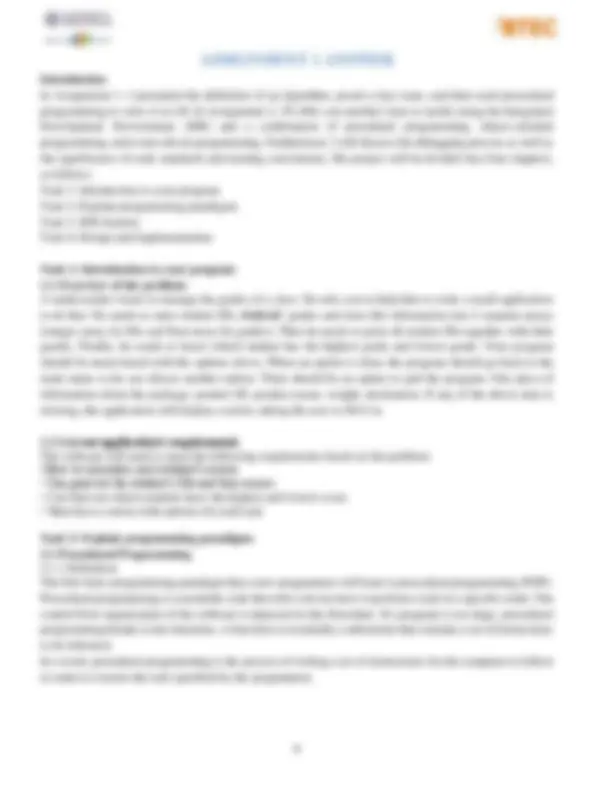
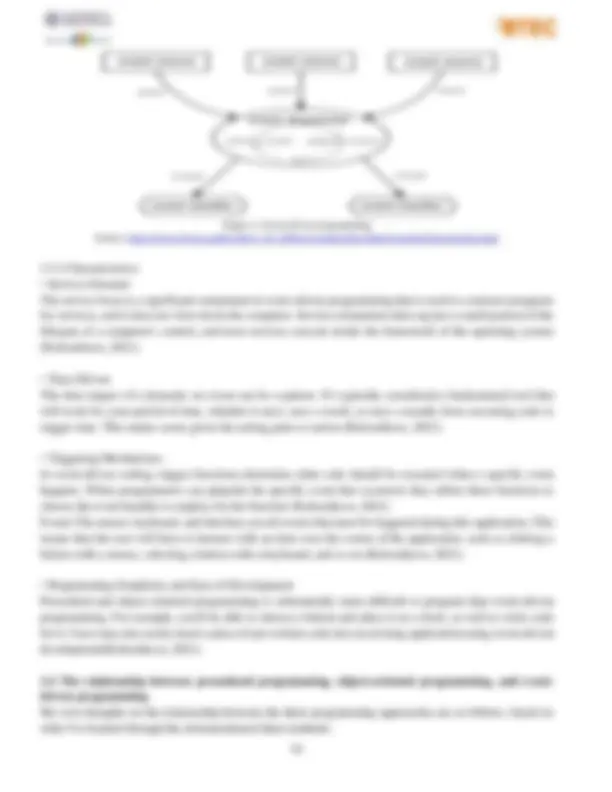


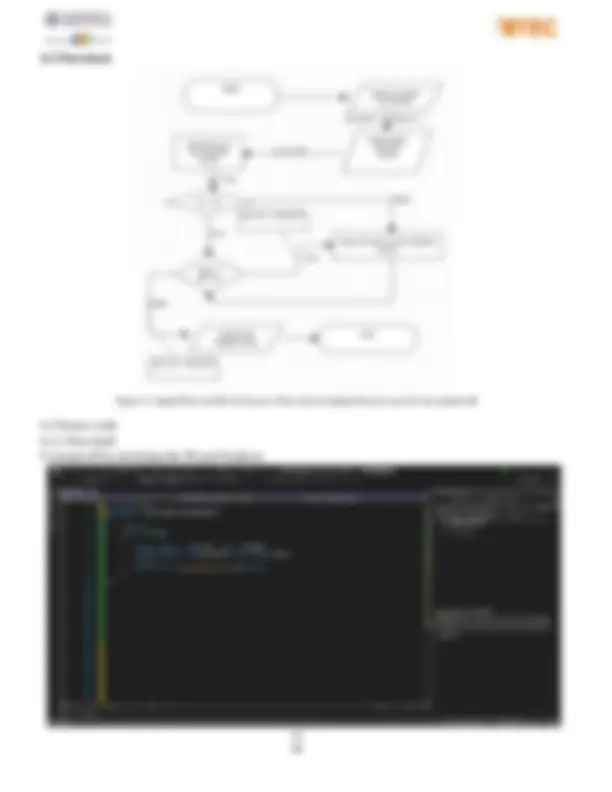
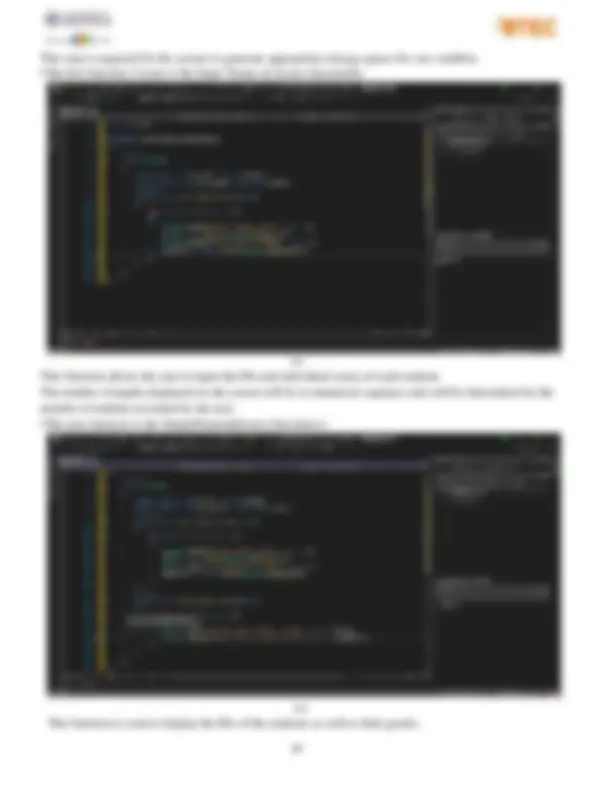
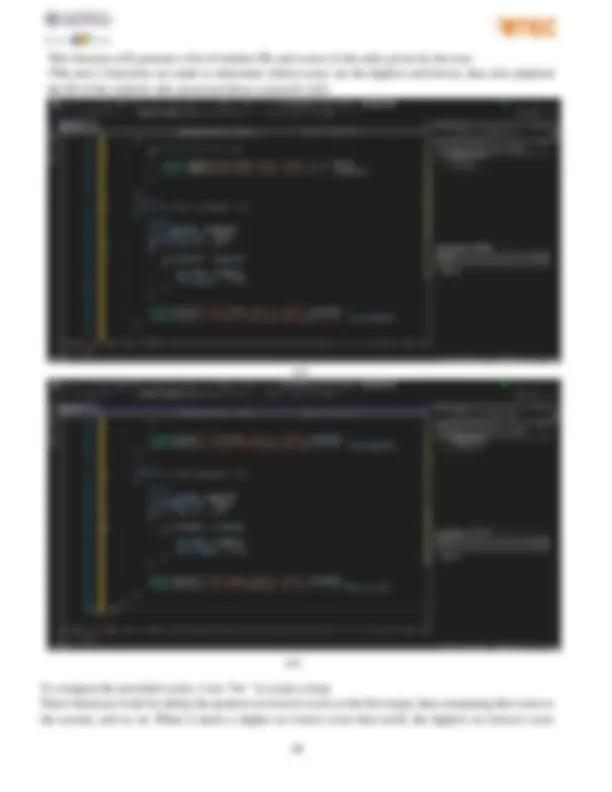
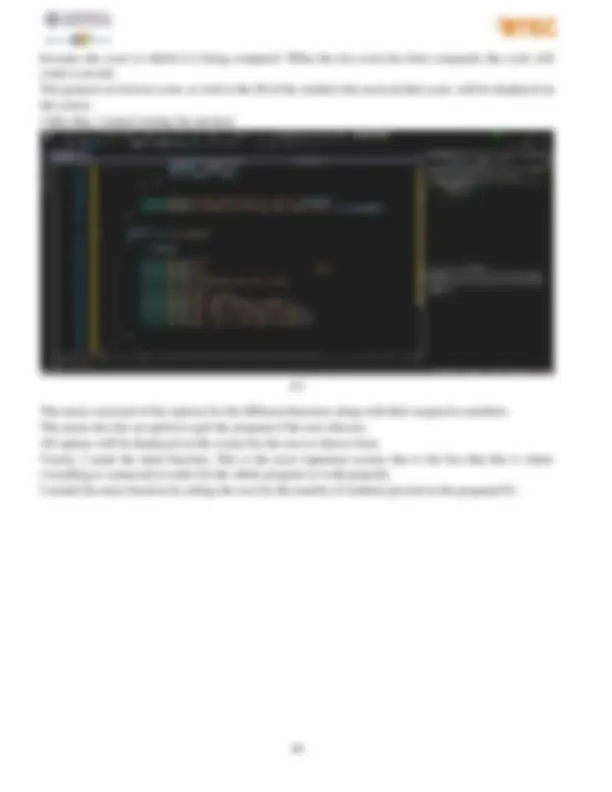
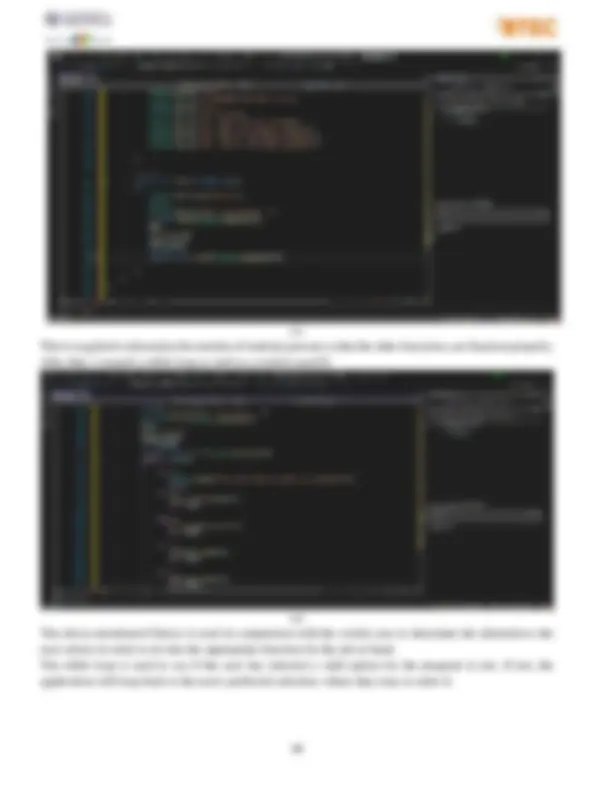

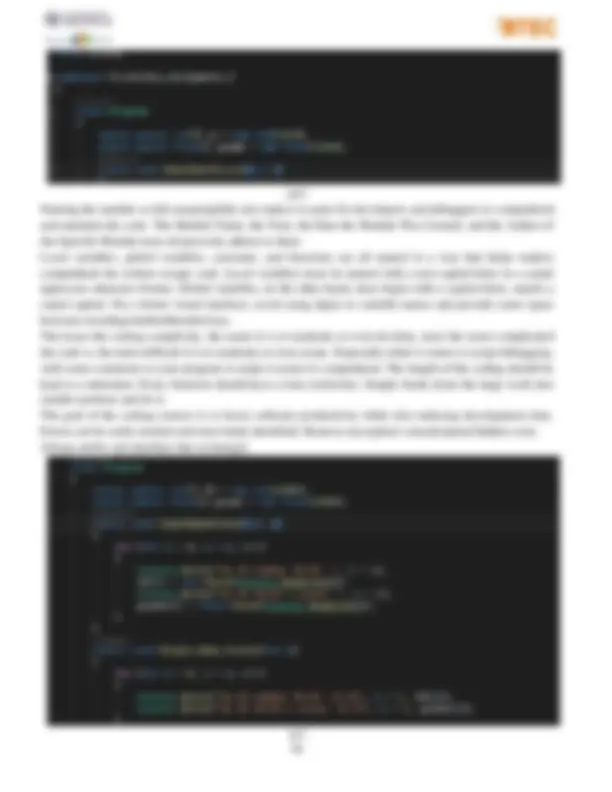





Study with the several resources on Docsity

Earn points by helping other students or get them with a premium plan


Prepare for your exams
Study with the several resources on Docsity

Earn points to download
Earn points by helping other students or get them with a premium plan
Community
Ask the community for help and clear up your study doubts
Discover the best universities in your country according to Docsity users
Free resources
Download our free guides on studying techniques, anxiety management strategies, and thesis advice from Docsity tutors
Assignment 2 subject Programming, Exercises for Computer Science
Typology: Exercises
1 / 27

This page cannot be seen from the preview
Don't miss anything!




















Learner’s name: Tran Quang HienID: GCS Class: GCS1003A Subject code: 1618 Assignment due: Assignment submitted:
ASSIGNMENT 2 FRONT SHEET Qualification BTEC Level 5 HND Diploma in Computing Unit number and title Unit 1: Programming Submission date 05 /03/2022 Date Received 1st submission Re-submission Date Date Received 2nd submission Student Name Tran Quang Hien Student ID GCS Class GCS1003A Assessor name Nguyen Tuan Dang Student declaration I certify that the assignment submission is entirely my own work and I fully understand the consequences of plagiarism. I understand that making a false declaration is a form of malpractice. Student’s signature Grading grid P2 P3 P4 P5 M2 M3 M4 D2 D3 D
Student Name/ID Number: Tran^ Quang Hien Unit Number and Title: Unit 1: Programming Academic Year: 2021 – 2022 Unit Assessor: Nguyen Tuan Dang Assignment Title: Application development with IDE Issue Date: Submission Date: 05/03/ Internal Verifier Name: Date: Submission Format: Format: ● The submission is in the form of an individual written report. This should be written in a concise, formal business style using single spacing and font size 12. You are required to make use of headings, paragraphs and subsections as appropriate, and all work must be supported with research and referenced using the Harvard referencing system. Please also provide a bibliography using the Harvard referencing system. Submission ● Students are compulsory to submit the assignment in due date and in a way requested by the Tutor. ● The form of submission will be a soft copy posted on http://cms.greenwich.edu.vn/. ● Remember to convert the word file into PDF file before the submission on CMS. Note: ● The individual Assignment must be your own work, and not copied by or from another student. ● If you use ideas, quotes or data (such as diagrams) from books, journals or other sources, you must reference your sources, using the Harvard style. ● Make sure that you understand and follow the guidelines to avoid plagiarism. Failure to comply this requirement will result in a failed assignment. Unit Learning Outcomes:
LO2 Explain the characteristics of procedural, object-oriented and event-driven programming, conduct an analysis of a suitable Integrated Development Environment (IDE) LO3 Implement basic algorithms in code using an IDE LO4 Determine the debugging process and explain the importance of a coding standard Assignment Brief and Guidance: Assignment scenario Scenario : You have applied for a post as a trainee with a software development company and have been invited for an interview. You have been passed the presentation to demonstrate your problem solving and basic programming skills. Now you are given a more challenge task to create a fully working, secure application that has been developed using an IDE and adheres to coding standards for a detailed business problem. Tasks You will discuss a suitable problem with your mentor and list the user requirements before designing, implementing (coding) and testing a solution. You will create a report that should include: ● Introduction to your program (list of requirements and screenshots of program) ● Explain some of programming paradigms. Evaluate why and how your program use these (or some of) paradigms. ● Explain the common features of an IDE should have and evidence of how the IDE was used to manage the development of your code. ● An evaluation of developing applications using an IDE versus developing an application without using an IDE. ● An explanation and evaluation of the debugging process in the IDE used and how it helped with development. ● An explanation and evaluation of coding standards used in your program and the benefits to organisations of using them. The working application produced must also be demonstrated together with the presentation. Case Studies You can choose one of following case studies to implement Hotel Management System: A Hotel Management System is a software built to handle all online hotel activities easily and safely. This System will give the hotel management power and flexibility to manage the entire system from a single online portal. The system allows the manager to keep track of all the available rooms in the system as well as to book rooms and generate bills.
Learning Outcomes and Assessment Criteria (Assignment 2): Learning Outcome Pass Merit Distinction LO2 P2 Give explanations M2 Analyse the D2 Critically evaluate of what procedural, common features that the source code of an object-oriented and a developer has access application which event-driven to in an IDE. implements the paradigms are; their programming characteristics and the paradigms, in terms of relationship between the code structure and them. characteristics. LO3 P3 Write a program that implements an algorithm using an IDE. M3 Use the IDE to manage the development process of the program. D3 Evaluate the use of an IDE for the development of applications contrasted with not using an IDE. LO4 (^) P4 Explain the debugging process and explain the debugging facilities available in the IDE. M4 Evaluate how the debugging process can be used to help develop more secure, robust applications. D4 Critically evaluate why a coding standard is necessary in a team as well as for the individual. P5 Outline the coding standard you have used in your code.
3 .3.3 How the debugging process can be used to help develop more secure, robust applications ............................................................................................................................................... 14
Introduction In Assignment 1, I presented the definition of an algorithm, posed a tiny issue, and then used procedural programming to solve it in C#. In Assignment 2, I'll offer you another issue to tackle using the Integrated Development Environment (IDE) and a combination of procedural programming, object-oriented programming, and event-driven programming. Furthermore, I will discuss the debugging process as well as the significance of code standards and naming conventions. My project will be divided into four chapters, as follows: Task 1: Introduction to your program Task 2: Explain programming paradigms Task 3: IDE features Task 4: Design and Implementation Task 1: Introduction to your program 1 .1 Overview of the problem A math teacher wants to manage the grades of a class. He asks you to help him to write a small application to do that. He needs to enter student IDs, students’ grades and store this information into 2 separate arrays (integer array for IDs and float array for grades). Then he needs to print all student IDs together with their grades. Finally, he needs to know which student has the highest grade and lowest grade. Your program should be menu-based with the options above. When an option is done, the program should go back to the main menu so he can choose another option. There should be an option to quit the program. One piece of information about the package: product ID, product name, weight, destination. If any of the above data is missing, the application will display a notice asking the user to fill it in. 1 .2 List out application’s requirements The software will need to meet the following requirements based on the problem:
Figure 1 - How Procedural programming runs the program 2 .1.2 Characteristics Procedural programming languages make it easy for developers or programmers to build large application programs by dividing them into subroutines also known as functions. Procedural programming implements a top-down approach, i.e., a programming paradigm. In addition, procedural programming breaks down the application program into data structures, variables, and subroutines that can be easily used by users. Procedural programming languages or codes are executed very quickly because they take up fewer memory resources. Furthermore, procedural programming languages allow developers to provide a greater degree of control as well as portable source code. Therefore, it can be said that procedural programming can be used to evaluate and analyze all the distinguishing areas of our lives. In addition, procedural programming provides better solutions for complex programs.
Source: https://www.boost.org/doc/libs/1_62_0/libs/coroutine2/doc/html/coroutine2/motivation.html 2 .3.2 Characteristics
You define a program and its subroutines as a series of steps when you program. Declarative programs, on the other hand, intend to explain the result without mentioning the methods used to computerize it, but rather with a description or representation of the desired outcome. Object-oriented programming techniques address these issues. Object-oriented programming (OOP) is a method of grouping code into classes of component objects that work together to solve a problem. Encapsulation, inheritance, abstraction, and polymorphism are four properties of object-oriented programming. The objects in the class, on the other hand, must still adhere to procedural programming. These two programming approaches, however, continue to execute on the terminal interface (black background and write font). That's why event-driven programming was created to make it easier for programmers to capture events on the Win-Form platform. There will be numerous events, but the "click" event will continue to be the most common. The basic event loop is given by the underlying system, while event-driven programming relies on procedural methods for event handling. You'll save time and effort by not having to write your own event loop, and you'll be able to make use of the many libraries that already operate with the system's event loop. Event-based programs are frequently, but not always, written in an object-oriented style. Task 3: IDE features 3 .1 Definition An integrated development environment (IDE) is application development software that combines many developer tools into a single graphical user interface (GUI) (Anon., n.d.). An IDE usually consists of the following components:
When the application first starts, it will display a window where I may add data to begin the process of running the code by texting the "Add" button. The first red dot will light up when you begin checking the code. You may now hit F11 to exit. This is the "Step Into" function, which improves the application's execution one statement at a time. The debugger will interrupt the first statement to be performed when you start the application with F11. This is the function that will let you comprehend the code execution in the most thorough way possible. During debugging, if you feel a piece of code is okay but don't want to double-check it, you can hit F10. This is the "Step Over" feature, which allows you to skip over code that you don't care about. This allows you to easily get to the code that most interests you. After you've double-checked that your software is working properly. You may leave the debugger by pressing Shift + F5. That's how the debugging process works in Visual Studio. So, what functions are available in the debugging process in Visual Studio to assist programmers to understand the code more deeply? Here are a few functions that Visual Studio makes available to programmers:
The IDE makes developing applications easier and more convenient for you.. Even if you don't have an IDE, you can still create source code since all you need is the proper compiler (compiler) for that programming language to run the source code. When you're building apps using Visual Studio 2019, the IDE features a built-in compiler or interpreter that enables you to run code directly.
This step is required for the system to generate appropriate storage spaces for our variables.
This function will generate a list of student IDs and scores in the order given by the user.